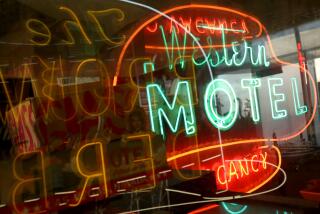Topics / HISTORY : Gardena’s Homage to Strawberries
- Share via
As a developer of Strawberry Square shopping center, Bruce Kaji was naturally interested in the city’s special relationship with the strawberry.
Delving into historical files, Kaji learned that the strawberry played a significant role in Gardena’s roots. Strawberry farmers prospered in the area during the early 1900s, shipping their red, juicy wares daily to Los Angeles during berry season by Pacific Electric red cars, according to historical records and photographs.
The area where Strawberry Square now stands was referred to as “Strawberry Park” before Gardena incorporated in 1930, and residents held two-day strawberry festivals complete with a parade, Kaji said. The strawberry flower was named the city’s official flower.
In the 1920s, strawberry production died out, probably due to the lack of crop rotation, according to a historical report drafted by the city in 1981.
To educate the public about this part of Gardena’s agrarian history, Kaji and his development partners have produced a display at their shopping center at 1000 Rosecrans Ave.
Kaji had historical photographs that depict the area and the strawberry farmers transferred onto large tiles that were embedded into the external walls of Strawberry Square. The developers plan to unveil the 14 photo tiles at a ceremony today.
Kaji culled the photographs from the city, the Gardena Valley Chamber of Commerce and Sumitomo Bank. The photographs show area streets and strawberry fields in the early 1900s and include pictures of circa-1917 Strawberry Festival parades.
Ceramic artist Jerry Matsukuma transferred the photographs onto 1 1/2-foot by 2-foot tiles. Matsukuma, who created a similar photo tile display at Japanese Village Plaza in Little Tokyo, said putting the photos on tile involves shooting the photograph through a special screen to produce a film positive, and glazing and burnishing the tile to form a smooth surface that will allow a photograph to be printed on it. The photo tile is then heated in a kiln at 2,350 degrees to lock in the image.
“I decided it would be fun to show the square had a history in the city,” Kaji said of the project, which cost $30,000. “And tiles are more permanent than regular photographs.”
More to Read
Sign up for Essential California
The most important California stories and recommendations in your inbox every morning.
You may occasionally receive promotional content from the Los Angeles Times.













